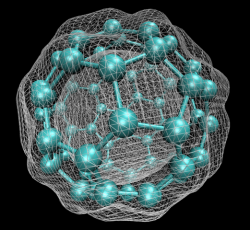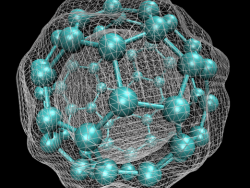In early September 1985, a team of scientists discovered a previously unknown pure carbon molecule, C60, which they dubbed buckminsterfullerene. The name was chosen because the geodesic domes of Buckminster Fuller provided a clue that the molecule’s atoms might be arranged in the form of a hollow cage. The structure, a truncated icosahedron with 32 faces, 12 pentagonal and 20 hexagonal, has the shape of a soccer ball.
Harold Kroto

YearAdded:
Image Credit:
Courtesy Wikipedia/Itamblyn (CC BY-SA 3.0)
Image Caption:
Buckminsterfullerene C60 is an example of a structure in the fullerene family.
Era_date_from:
1985
2010
Innovations

In early September 1985, a team of scientists discovered a previously unknown pure carbon molecule, C60, which they dubbed buckminsterfullerene. The name was chosen because the geodesic domes of Buckminster Fuller provided a clue that the molecule’s atoms might be arranged in the form of a…
Read More

